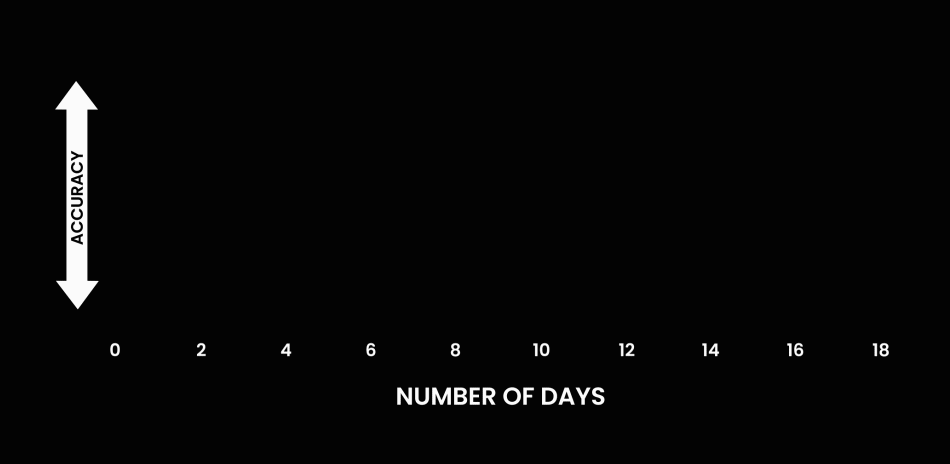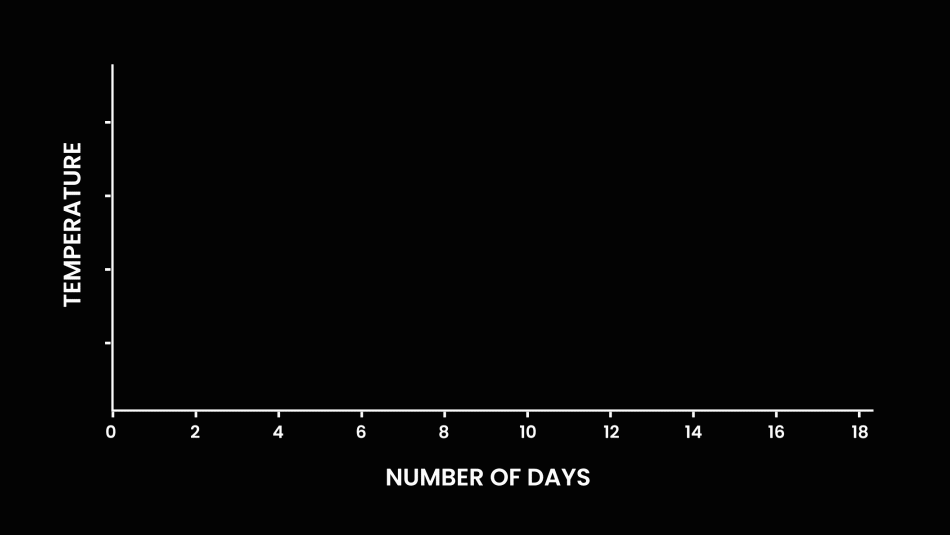Confronting the unpredictable
Meteorologists can't forecast the weather more than 2-3 weeks in advance. And they never will.
Jul 22, 2019 - by David Hosansky
Jul 22, 2019 - by David Hosansky
The Sun will not start setting in the east. Niagara can't begin flowing uphill. And the weather's not going to become predictable more than a couple of weeks away.
Even with the ideal computer model and nearly perfect observations, new research confirms what meteorologists have long thought: there's a limit to how far in advance we can forecast the weather.
"The atmosphere has a finite level of predictability," said Falko Judt, a scientist at the National Center for Atmospheric Research (NCAR) and the author of a recent paper on the subject. "If we want to predict the day-to-day weather, then we're stuck with two to three weeks."
For decades, scientists have concluded that the maximum range for a specific forecast is about a couple of weeks. But Judt, using an exceptionally detailed weather model and powerful supercomputer to run it on, returned to the issue to see if modern technology could move the forecasting needle.
The answer in a word: no.
Judt tested the limits of forecasting with high-resolution simulations created using the NCAR-based Model for Prediction Across Scales (MPAS), a powerful weather model developed over the past several years. In an idealized experiment, he found that the forecasts noticeably began deteriorating after six days. After 17 days, they were no better than relying on climate averages.
The reason has to do with the chaos of the atmosphere: even a slight perturbation, such as an unusually powerful thunderstorm in the tropics or a temporary kink in the jet stream over North America, will have impacts that gradually ripple out through the air worldwide. This makes it impossible to accurately forecast the weather at a specific point on the globe more than about a couple of weeks out, regardless of future prediction technologies.
The research was supported by the National Science Foundation.
Judt's conclusion reinforces other meteorological studies. As far back as 1969, a paper by Massachusetts Institute of Technology mathematician and meteorologist Edward Lorenz found that atmospheric models will have entirely diverged after two weeks because of tiny disturbances in the atmosphere, a theory that has become known as the "butterfly effect." Last year, scientists at Pennsylvania State University concluded that current 10-day forecasts can be extended by no more than about five days.
Despite such limits, Judt emphasized that researchers can make substantial improvement to shorter-term forecasts, potentially making them highly accurate about a week in advance. Scientists are also working on developing reliable subseasonal to seasonal predictions, providing residents and businesses with such information as the probability of the upcoming spring being particularly wet or warm.
But those hoping for longer-term deterministic forecasts — the kind that would inform parents if their town is going to be sunny with a high of 70 for the school picnic in six weeks — are doomed to be disappointed. Despite the impressive strides in weather prediction over the years, the physical world has constraints.

To examine the limits of predictability, Judt ran two nearly identical simulations with the MPAS model. The first was a 20-day control simulation that began with actual observations on a day in late October. For the purpose of the study, Judt assumed that this simulation perfectly described the weather for that 20-day period.
Then he ran an alternative 20-day simulation that began with starting conditions that differed from the control simulation by only the tiniest amount — on the order of a thousandth of a degree — a change too small to be detected by a standard weather station. This second simulation played the role of a forecast for the idealized experiment.
Judt was interested in how closely the "forecast" with nearly perfect starting conditions (the second simulation) could track the "actual weather" (the first simulation).
Both simulations, run on the NCAR-Wyoming Supercomputing Center, had a highly detailed resolution of 4 kilometers (about 2.5 miles).
For the first six days, the simulations tracked closely. After that, the "forecast" simulation began to deviate increasingly from the control simulation. Driving the deviation were small-scale events, such as thunderstorms, which over time began influencing larger-scale, regional atmospheric patterns until, after 17 days, the weather patterns in the two model simulations were no longer linked in a predictive way.
The paper was published last year in the Journal of the Atmospheric Sciences. Judt described it as a thought experiment.
"This helps us make decisions about where to focus our research," he said. "If we had perfect observations, we could make almost perfect forecasts of the day-to-day weather out to six or seven days. If we want to develop models that will accurately forecast the weather a month into the future, that's not a realistic goal."
